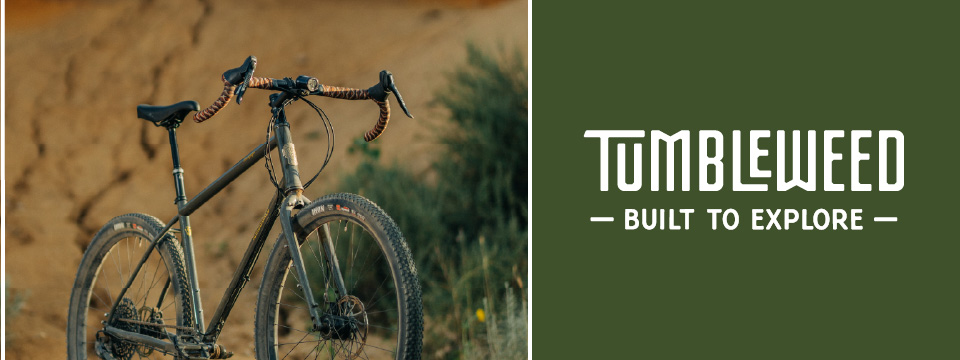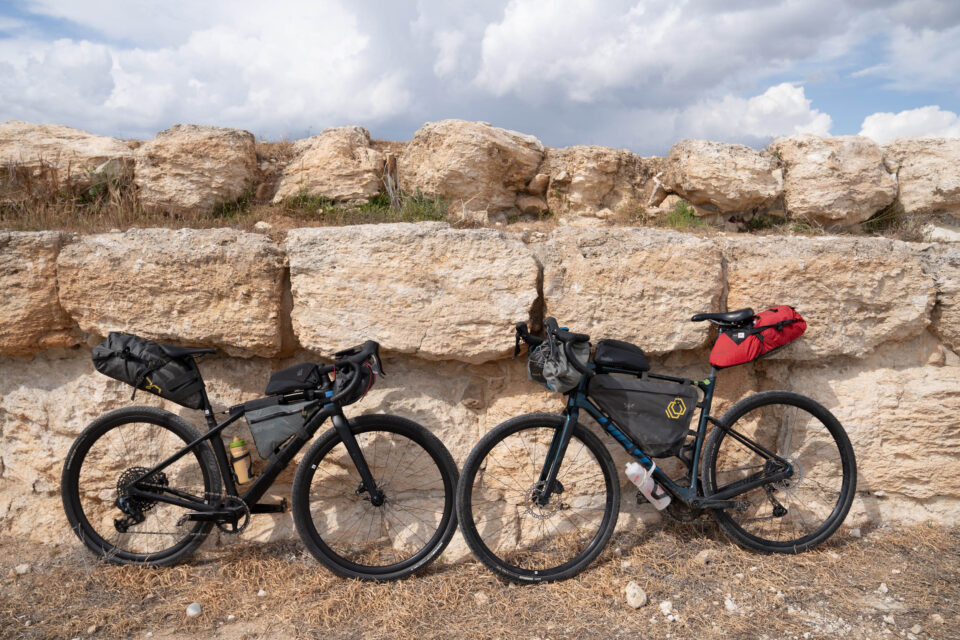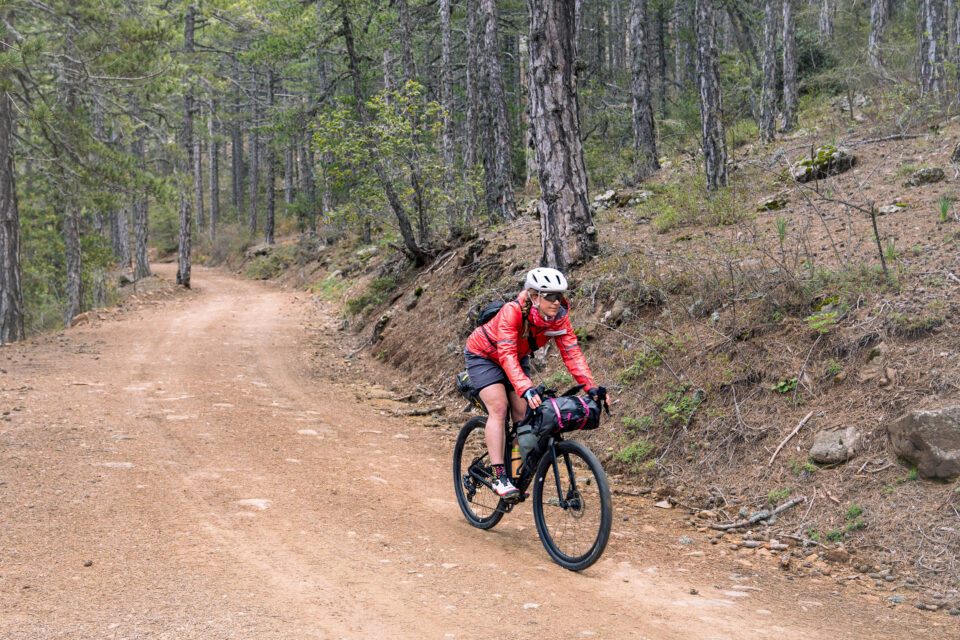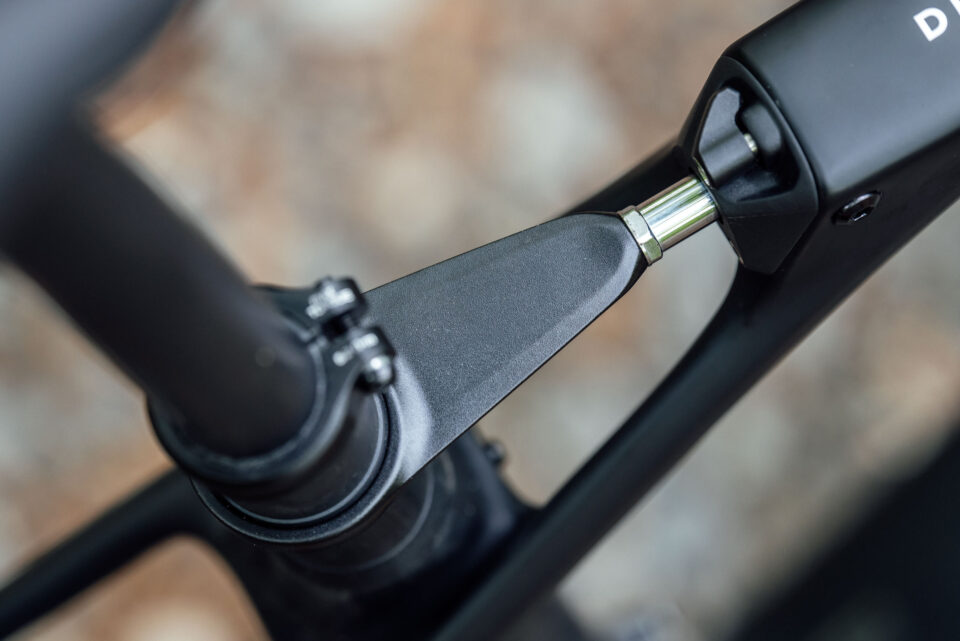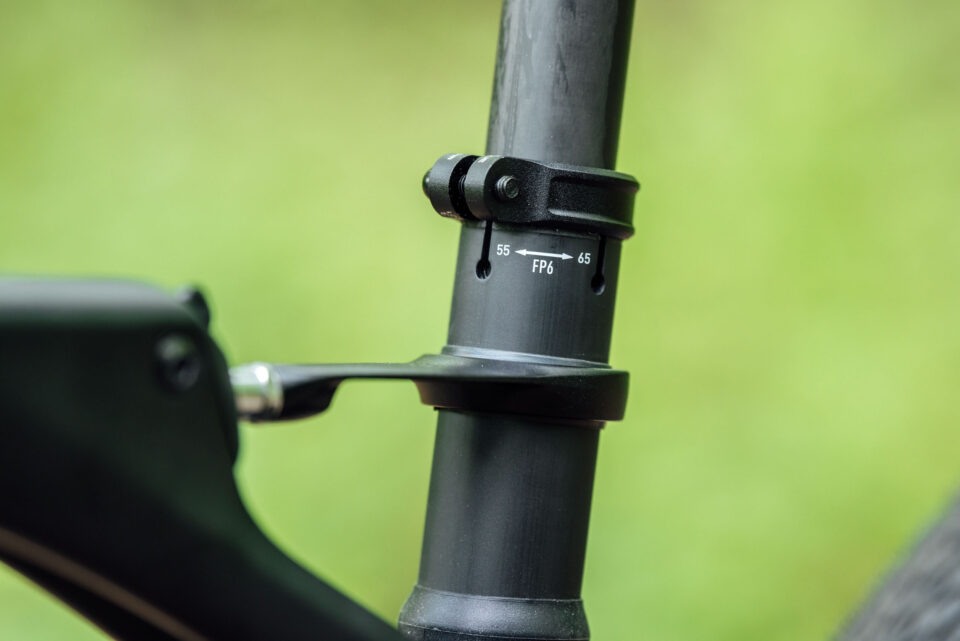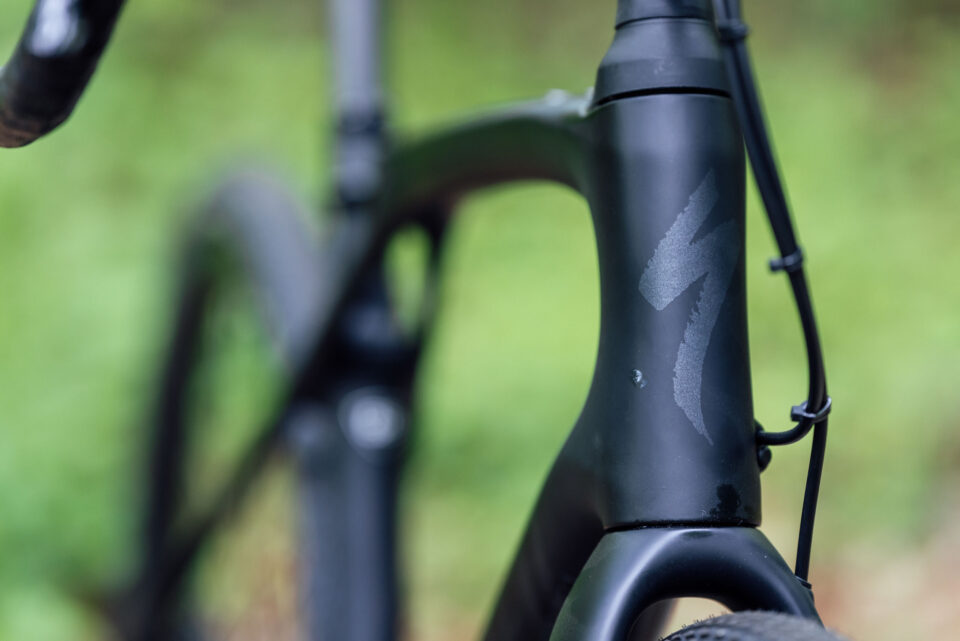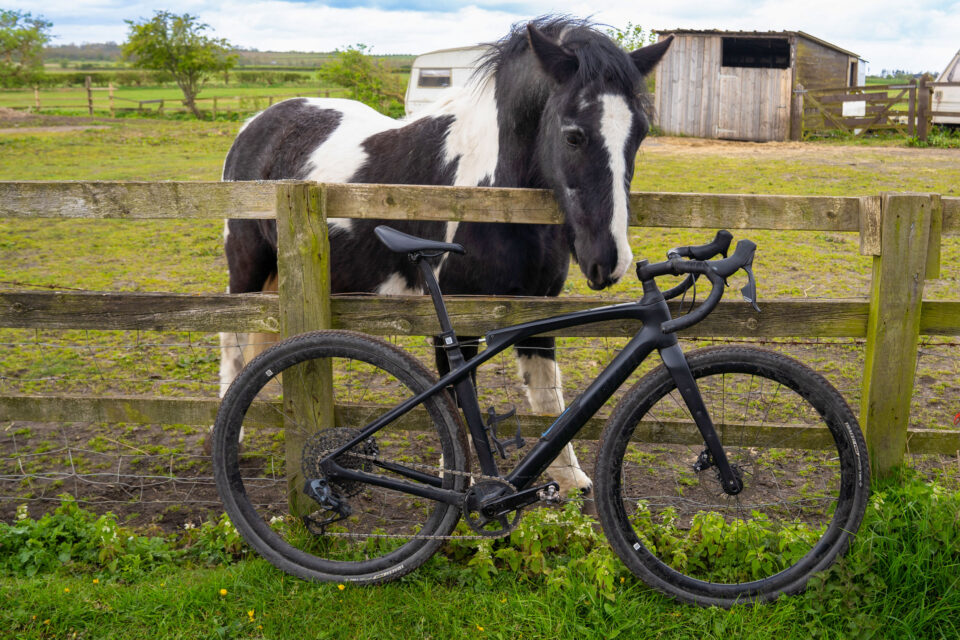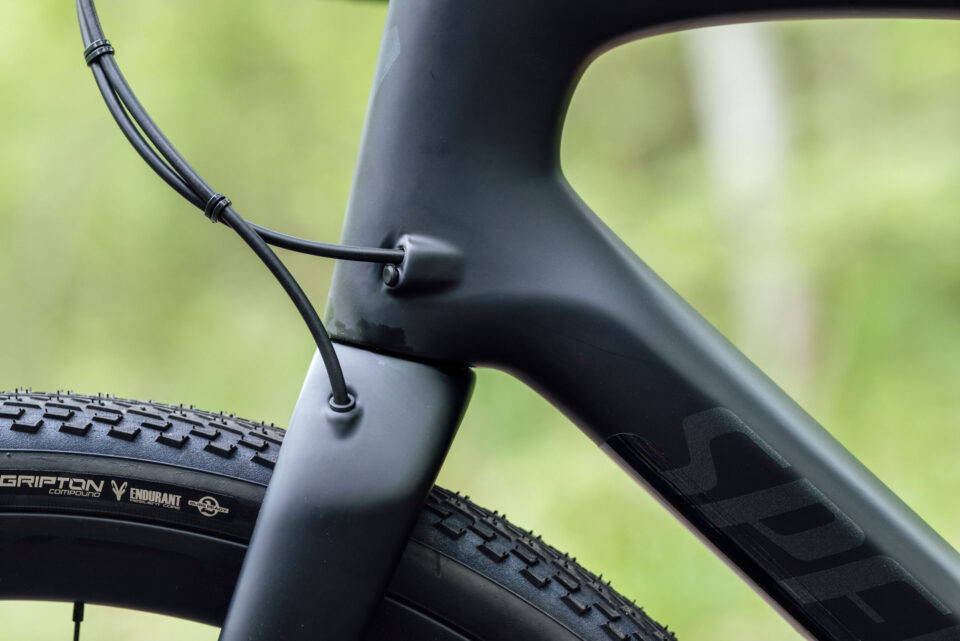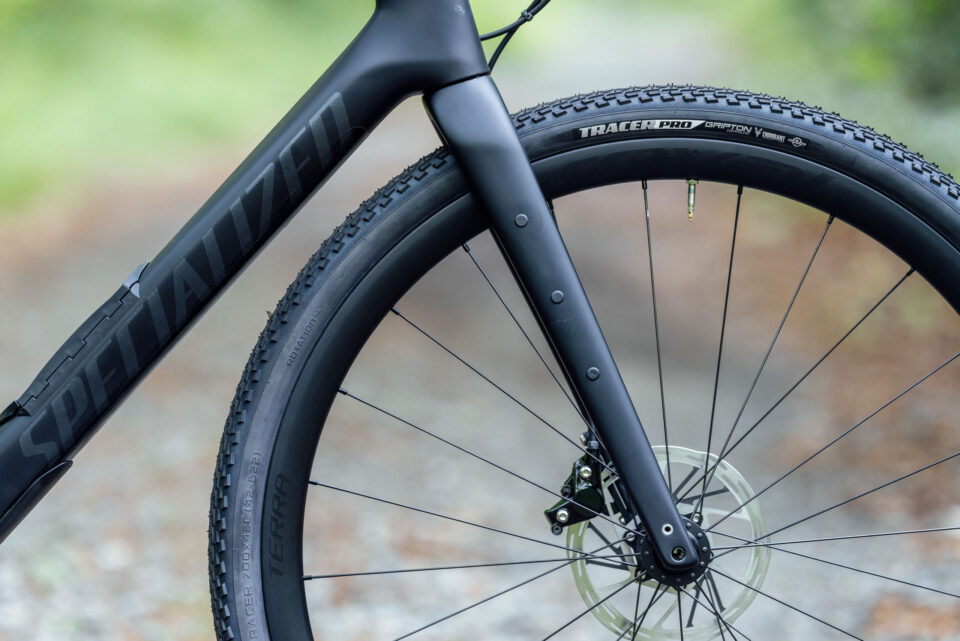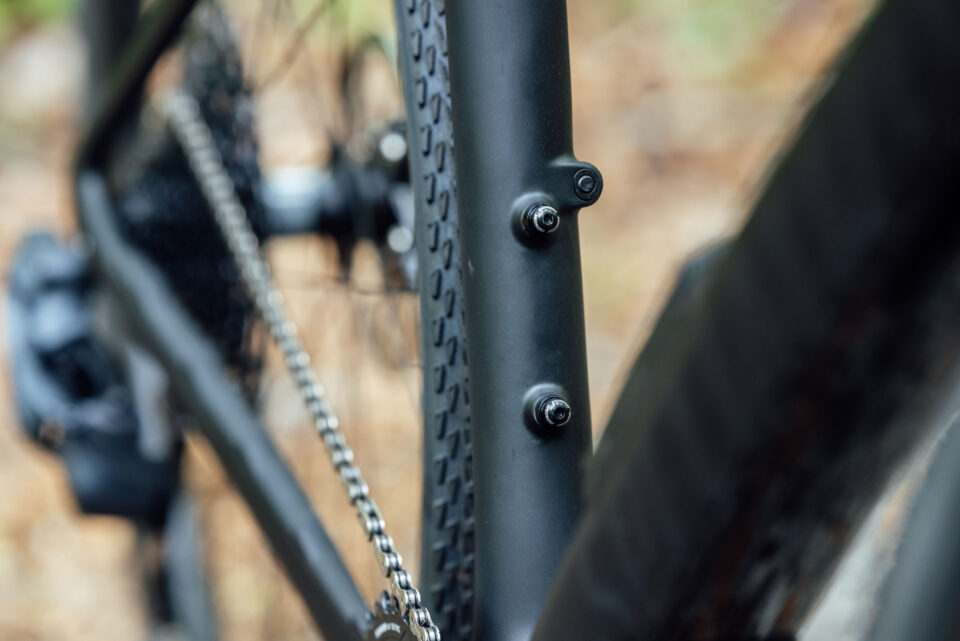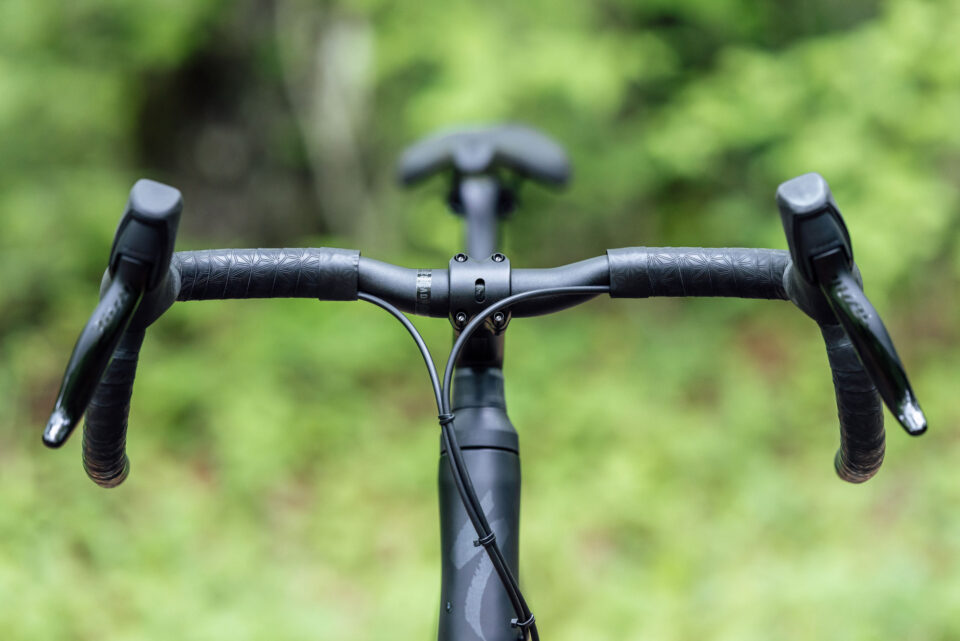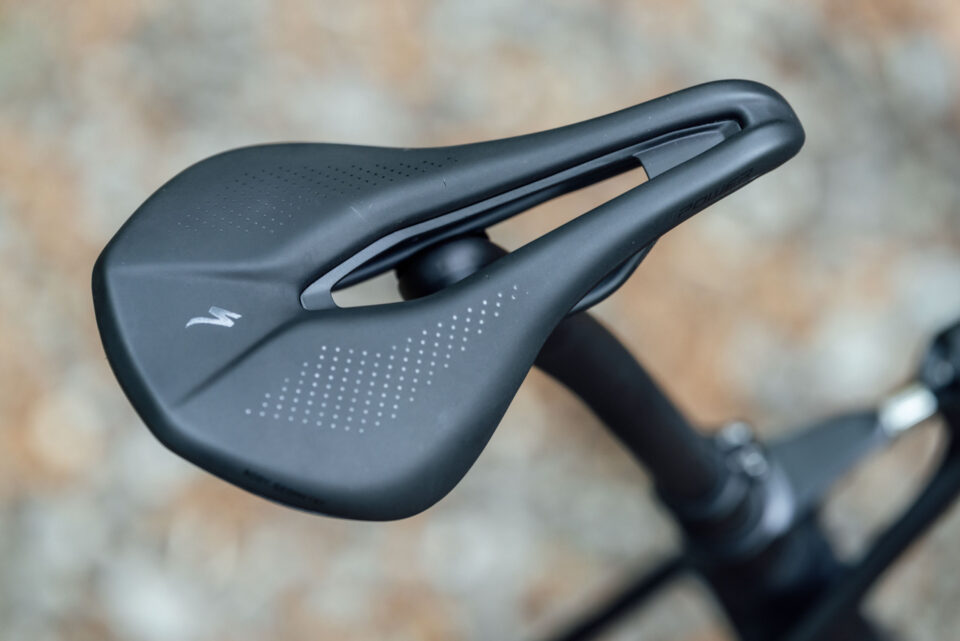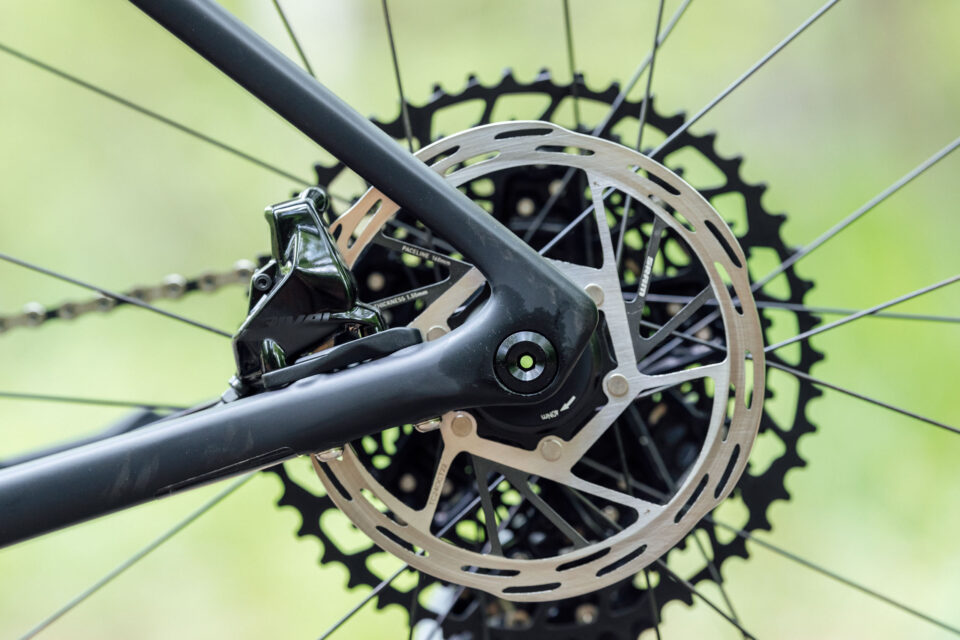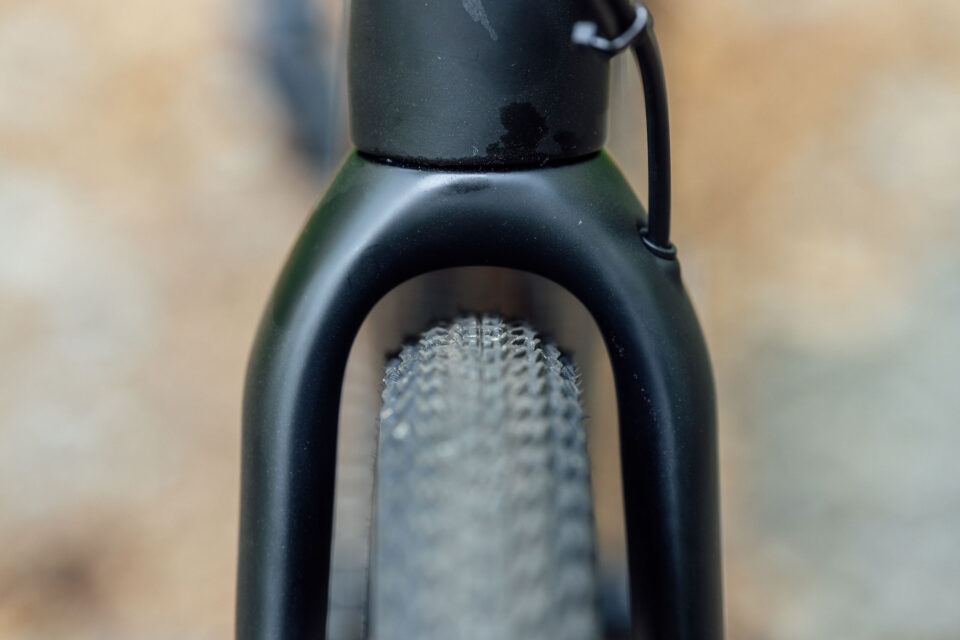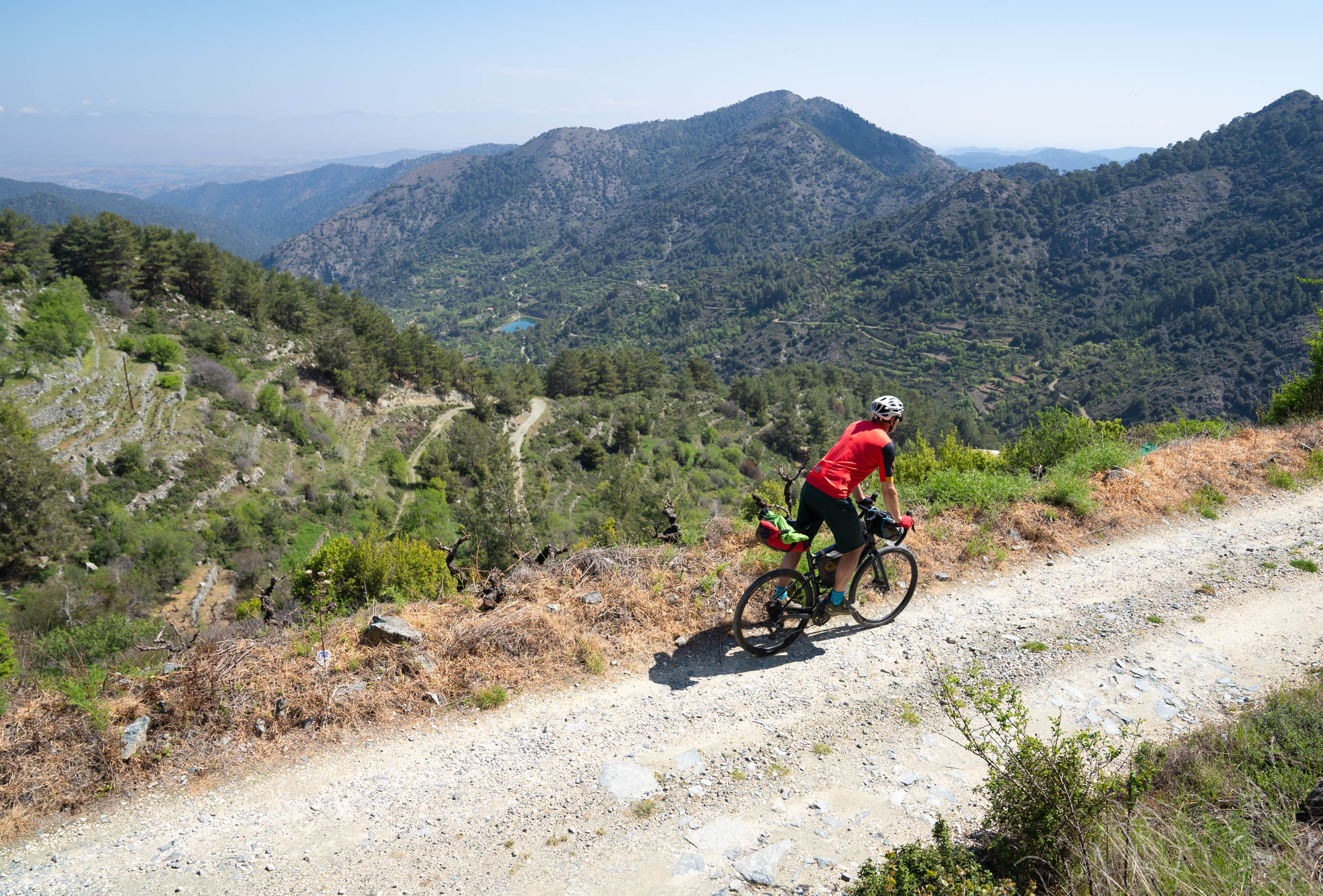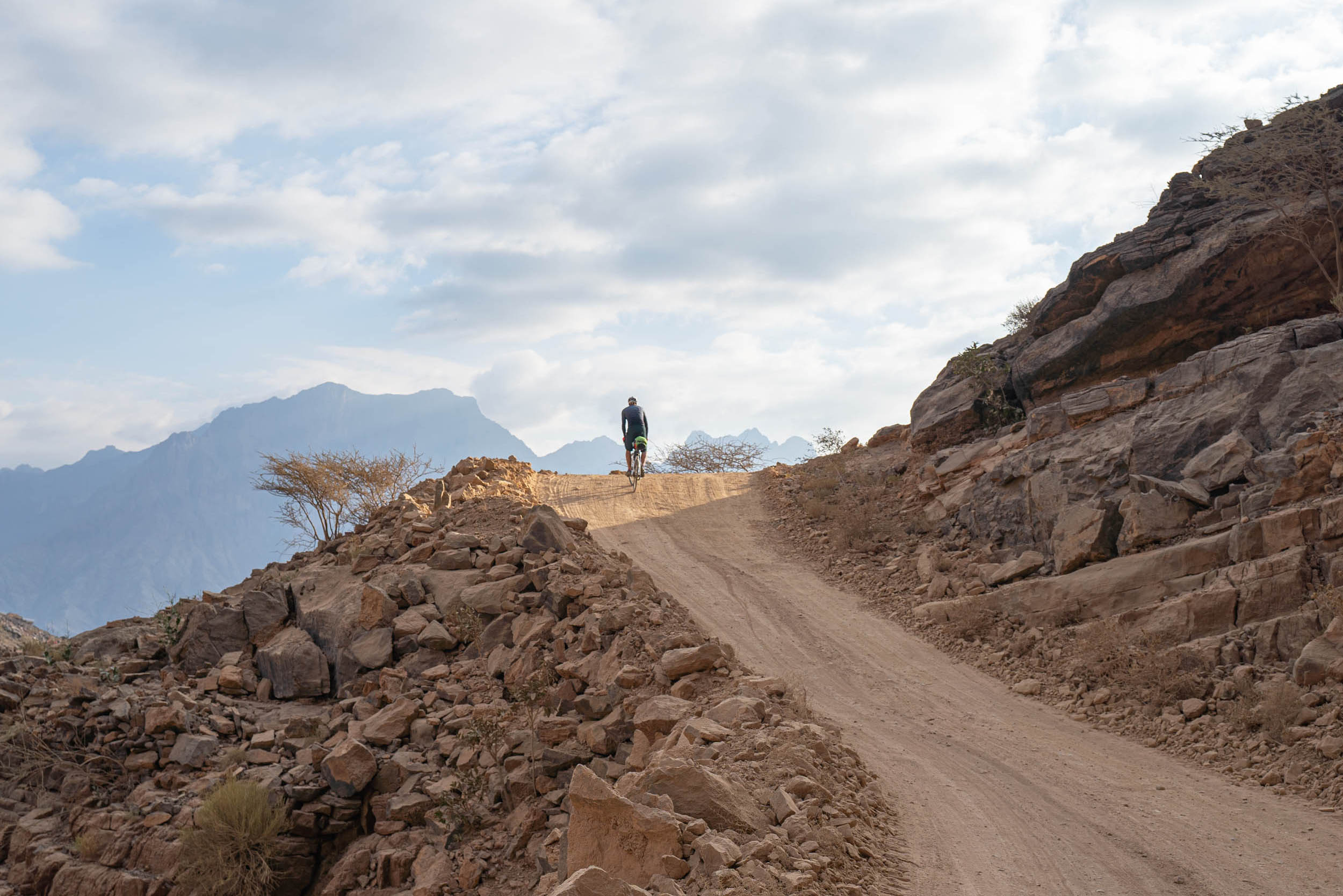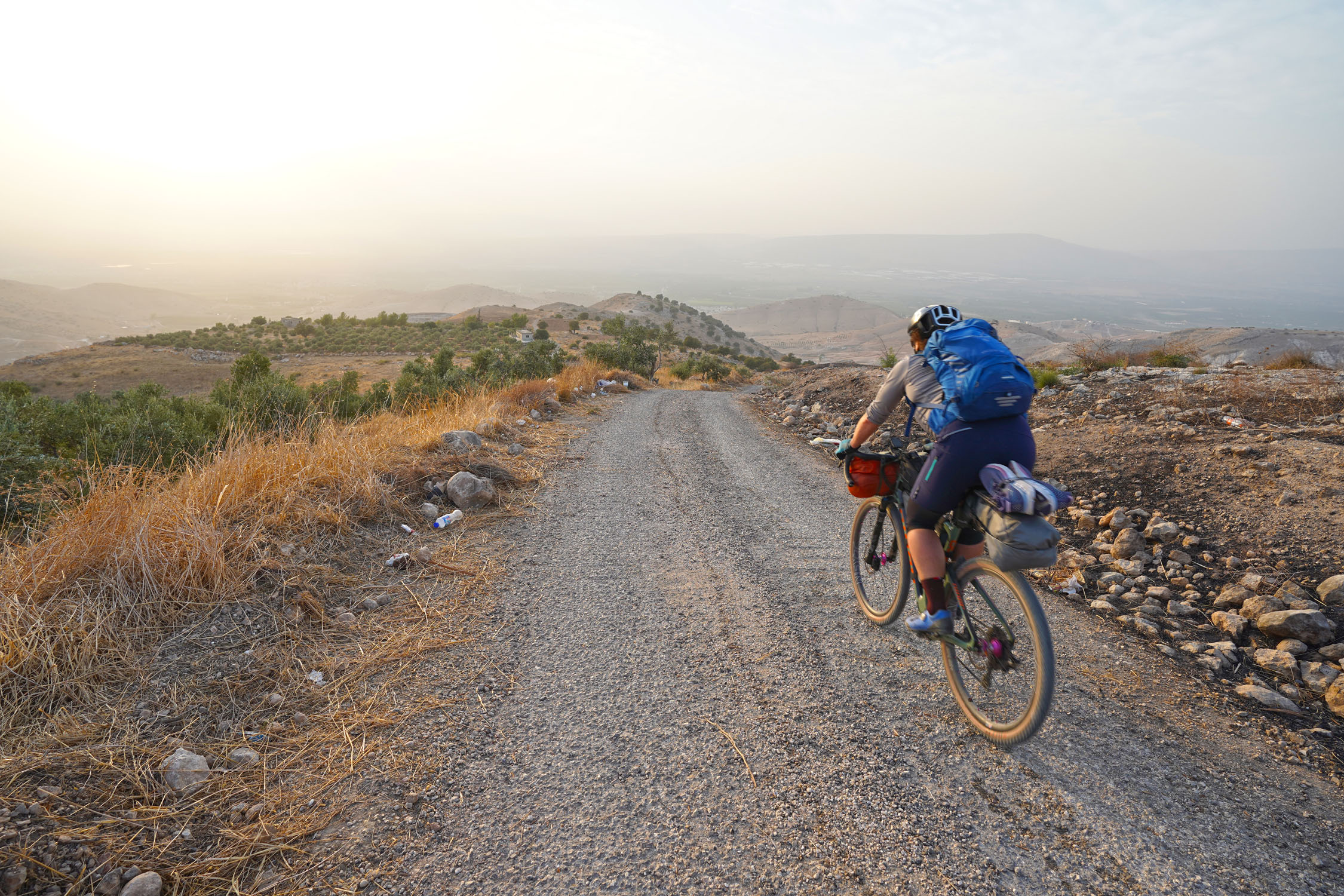Specialized Diverge STR Review: Taking a Bite out of Gravel
The acronym behind the new Specialized Diverge STR (Suspend The Rider) refers to its unique front and rear suspension setup that isolates riders from bumps without sacrificing the efficient stiffness of a rigid carbon frame. There was no suspension of disbelief required for Amy Jurries, however, as she found the Diverge STR to be a joy to ride on a recent bikepacking trip across the diverse landscapes of Cyprus, even when loaded. Find Amy’s full review here…
PUBLISHED May 9, 2024
The Specialized Diverge STR was a recent 2023 addition to the Specialized Diverge family of gravel bikes. The original Diverge launched to much fanfare back in 2014 and was marketed as an all-road bike. With its progressive, stable geometry and clearance for wider tires, the bike catered to the gravel-curious set. With no stop in the growth of gravel’s popularity in sight, Specialized added the front Future Shock suspension system to the Diverge range in 2018. The latest STR model takes a significant leap forward with the addition of rear suspension to the Future Shock system, making it the first full-suspension gravel bike from Specialized, aiming to push the boundaries of comfort and capability.
As with all things Specialized, there are several Diverge STR builds to choose from depending on the depth of your pockets. At $5,500, my Diverge STR Expert sits in the middle of the range, while the S-Works version will set you back $12,500 with its top-of-the-line component spec and two-pound weight savings. Even on the low end, this price range is on the high side for modern gravel bikes. Regardless of the frame material and component build, all STR models share a version of the Future Shock front and rear suspension system.

With an eight-day bikepacking trip across the mountainous gravel roads of Cyprus as my testing ground, I subjected the 54cm loaner bike to a wide range of riding conditions, from chunky limestone farm track and pristine pine forest trails to remote mountain roads and coastal track—all involving an absurd amount of climbing and descending.
Frame and Design
Specialized’s top-end Fact 11r carbon fiber strikes a careful balance between performance and compliance. This lightweight and ultra-stiff material excels in power transfer and precise handling; however, stiffness can come at the cost of comfort, especially on rough terrain.
To address this, Specialized incorporated their Future Shock front and rear suspension system into the Diverge STR. Originally developed to help riders win on cobblestones, the suspension system really excels on gravel. Unlike traditional suspension that moves the entire frame, Future Shock isolates the rider. This allows for 20mm of tunable travel in the front and up to 30mm of travel in the rear, effectively absorbing bumps and vibrations without sacrificing frame efficiency or responsiveness and keeps you in full control of the bike.
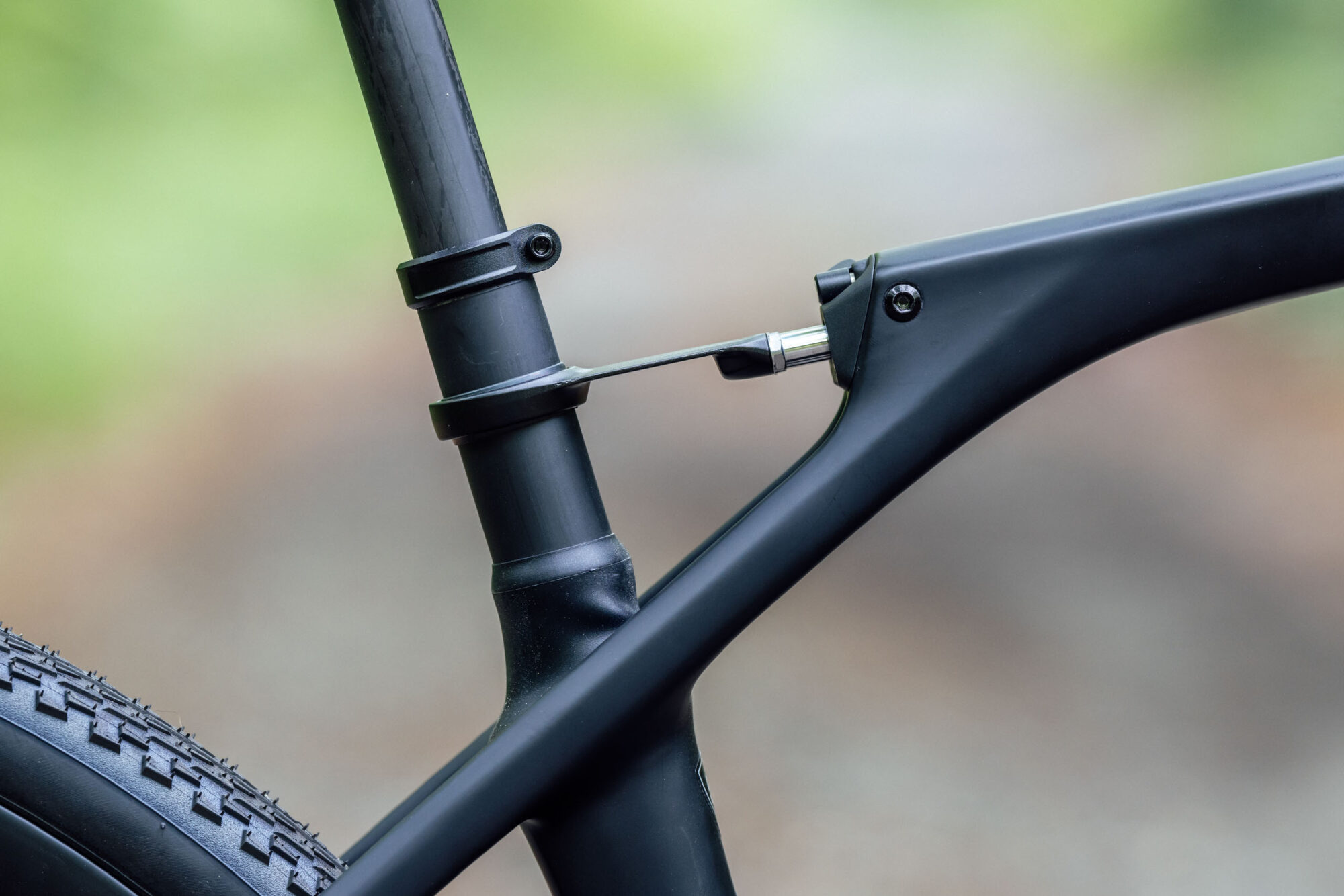
The result? The non-compromised frame ensures pedaling power translates directly to propulsion, keeping riders moving forward with minimal energy loss. Specialized hinged the design around a stiff frame combined with a lower trail number to provide razor-sharp handling, perfect for navigating technical sections and maneuvering with confidence. And the Future Shock technology takes the edge off of rough gravel roads, allowing you to ride longer and harder without fatigue. I found that the effects of the Future Shock are most noticeable on long days in the saddle, perfect for multi-day bikepacking journeys where your body takes a beating day after day.
The front Future Shock 3.0 system is composed of a hydraulic damper cartridge, a spring, and pre-load washers. In order to achieve 20mm of front travel for a wide variety of riders and conditions, there are three spring levels to choose from—soft, medium, and firm—as well as five pre-load washers that adjust the system sag. By changing the combination of springs and washers in the cartridge, you can tailor the system to both your personal preferences and riding conditions. For example, if you ride with more weight on the bars, you should opt for more preload or if you ride in a more upright position with less weight on the bars, you will require less preload. In Future Shock 3.3 systems, a dial on the stem lets you open or close the compression for a softer or firmer feel on the fly.
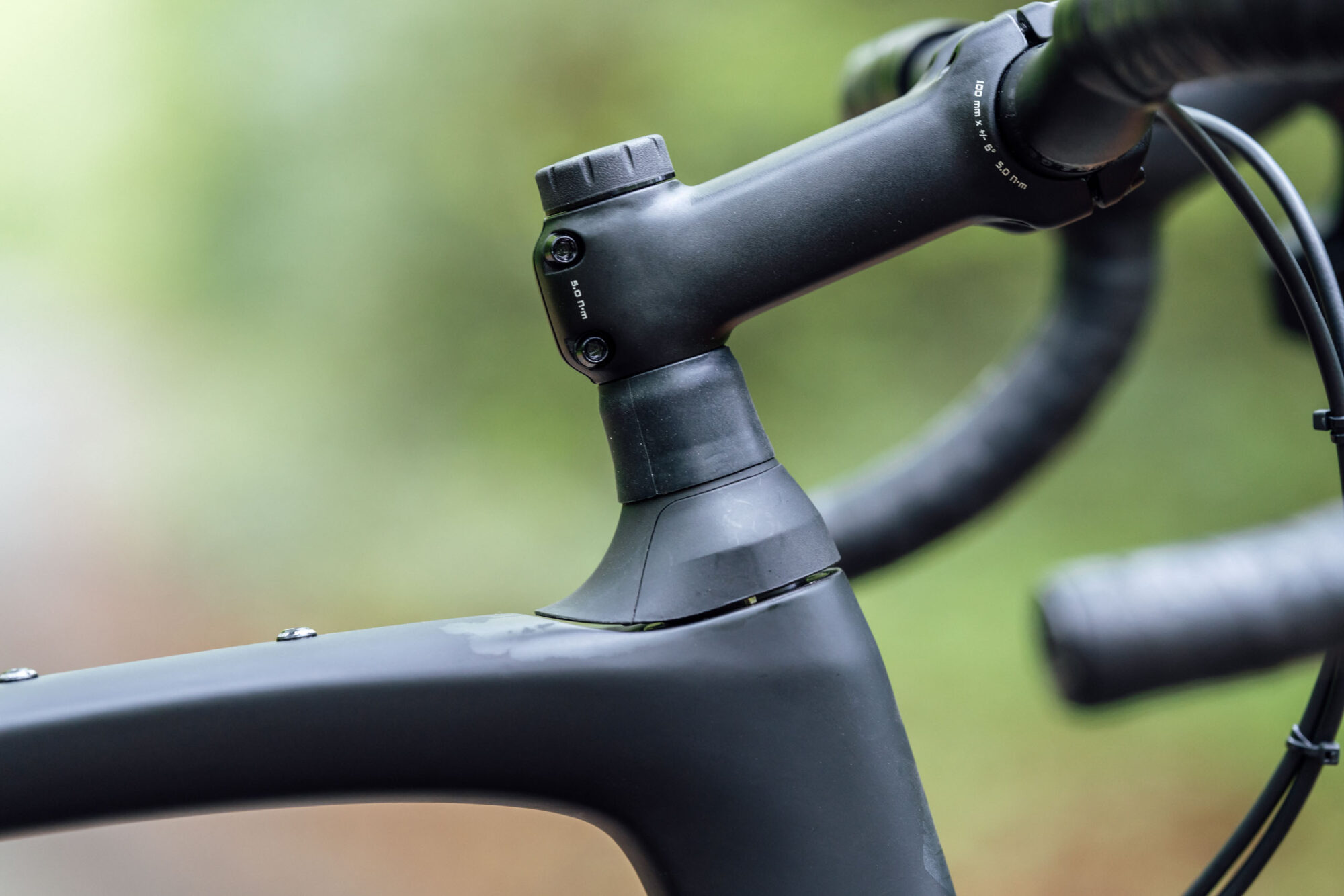
When riding, I couldn’t really tell that the handlebars were moving up and down, and I felt in control. Normally, if you take a big hit, your hands would want to fly off the bars if you weren’t holding on tight, but here, the system absorbs the force rather than it being transferred to your body. I felt less tired and achy in my arms and shoulders at the end of the day as the system reduces the jackhammer effect. The feeling is similar to riding with the ShockStop Suspension stem though instead of changing the angle of the bars, Future Shock simply moves up and down, which adds to the control factor. And as the system uses a damper, the movement is much smoother.
Specialized claims that the front suspension system is meant to last the lifetime of the bike and does not need servicing beyond wiping dirt and dust from the exterior. The brand does caution that top tube accessory bags that strap around the steerer tube below the stem aren’t compatible with the front Future Shock system.

In the rear, the suspension system includes a special carbon framepost, hydraulic damper inside the top tube, and tendon connecting both. Each framepost features two different stiffness options by rotating it 90 degrees in the frame and while the two included frame posts will cover most riders, there are a total of nine framepost available from Specialized. Within the system, the framepost enables optimal travel direction and sits within a flared seat tube to allow rearward flex in response to rough terrain. The damper controls the level of travel to eliminate bobbing under power and keep you in the saddle through big hits.
The damper is adjustable with an on-the-fly compression lever to adjust travel and a rebound dial that controls how fast the framepost returns to its normal position after a bump (adjusted via a hex key). The compression lever lets you toggle between three settings: open, medium, and closed. The damper itself is not serviceable but comes with a two-year warranty and will be supported as a replacement part for $500.
As you ride, the framepost sags ever so slightly and the saddle tips up with it. I never felt the framepost moving or the angle of the saddle changing, however. I simply felt more stable and comfortable or like I was riding on really wide tires. On a regular gravel bike, you get bounced around in the saddle on really rough terrain, whereas with the Future Shock system, most of that was smoothed out. Keep in mind that the rear suspension only isolates the rider, not the whole bike, so it won’t drastically improve control on technical descents when standing.
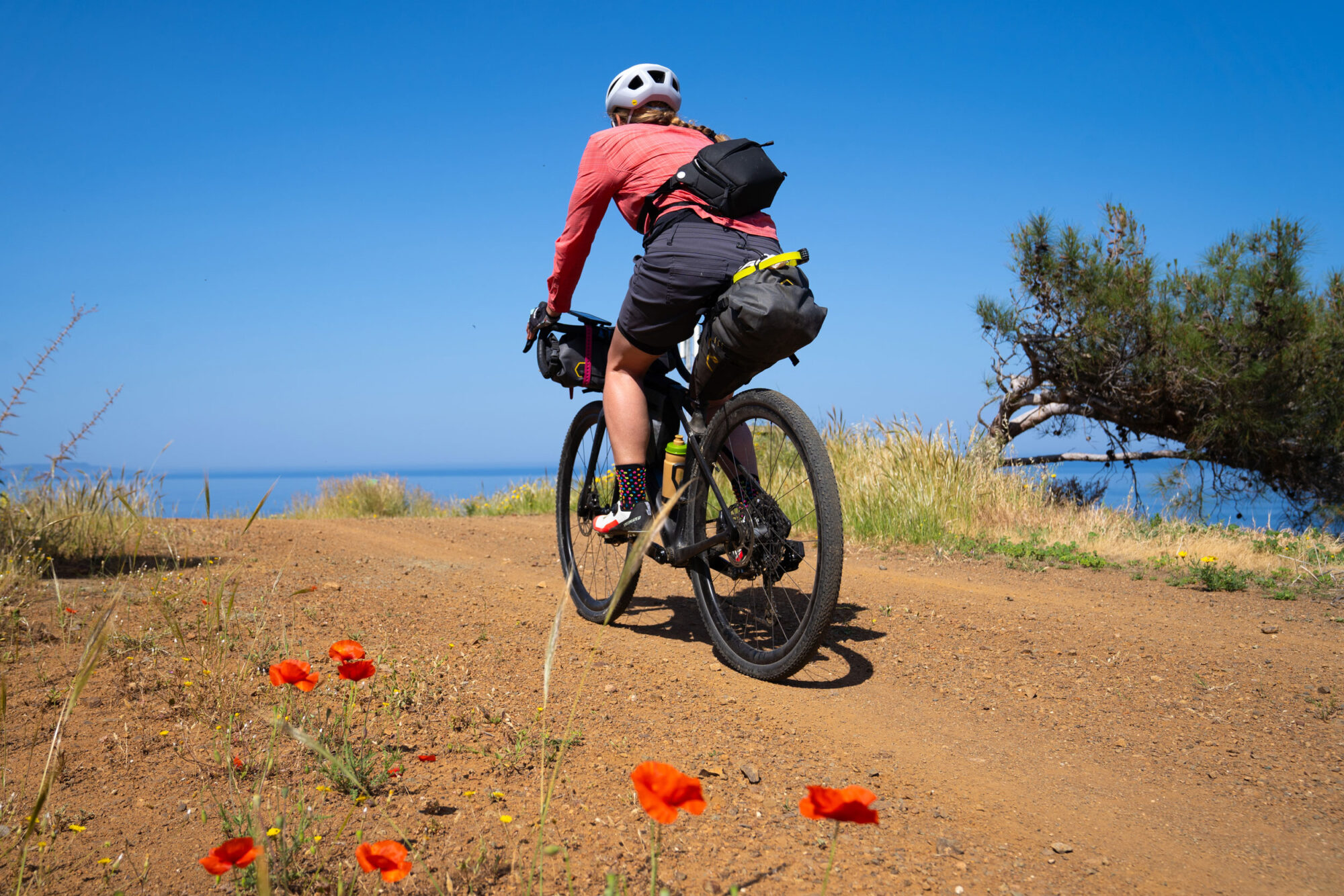
This balance between comfort and performance made the bike a fantastic choice for the diverse terrain of Cyprus. You can take on smooth mountain asphalt with efficiency and tackle demanding gravel sectors with control and confidence. The Future Shock system’s comfort benefits are even more pronounced when the bike is weighed down with gear, making long days in the saddle more enjoyable. Unlike a full-suspension mountain bike, the Future Shock system avoids the “sluggish bobbing” when up out of the saddle, and I didn’t feel the need to turn off the rear suspension when climbing on asphalt.
There are some trade-offs, however. While the Diverge STR frame features some gorgeous lines to accommodate the rear suspension system, this limits the size of compatible frame bags. I had to ditch my Apidura full-frame bag in favor of a smaller mountain bike frame bag. The system also adds weight. My 54cm Expert weighed roughly 22 pounds without pedals, placing it into a similar category as a lightweight XC bike such as my Yeti ASR C.
Unlike mountain bikes where you can get to a decent suspension setting on the fly with just a shock pump, precisely dialing in the compliance of the Diverge STR system is not that straightforward. I was lucky Specialized dialed in the suspension for me, but it will be a fiddly job if you want to do it yourself. The process involves possibly swapping out the framepost (as mentioned, Specialized offers nine options, each with a Soft orientation and a Stiff orientation) and adjusting the rebound dial on the damper. When bikepacking, you have to take into account the additional weight of your saddlebag. For adjustments to the front suspension, you need to swap out the spring and pre-load dampers.

Geometry
While fit can be a personal experience, the Diverge STR felt spot-on based on my past rides on similar endurance gravel bikes. The head tube angle (a hair steeper at 71.25 degrees compared to the BMC URS but similar to the Canyon Grail) translates to less sluggish handling at slower speeds, especially when the bike is fully loaded. The stiffer frame also helps prevent unwanted flex under weight.
| Size | 49 | 52 | 54 | 56 | 58 | 61 |
|---|---|---|---|---|---|---|
| Crank Length | 170mm | 170mm | 172.5mm | 172.5mm | 175mm | 175mm |
| Handlebar Width | 380mm | 400mm | 420mm | 420mm | 440mm | 440mm |
| Stem Length | 60mm | 70mm | 80mm | 90mm | 100mm | 100mm |
| Stack | 569mm | 576mm | 593mm | 609mm | 633mm | 659mm |
| Reach | 365mm | 374mm | 383mm | 392mm | 401mm | 410mm |
| Head Tube Length | 100mm | 100mm | 115mm | 130mm | 155mm | 182mm |
| Head Tube Angle | 70° | 70.5° | 71.25° | 71.75° | 71.75° | 71.75° |
| BB Height | 270mm | 265mm | 265mm | 265mm | 265mm | 265mm |
| BB Drop | 80mm | 85mm | 85mm | 85mm | 85mm | 85mm |
| Trail | 69mm | 66mm | 61mm | 57mm | 57mm | 57mm |
| Fork Length, Full | 390mm | 390mm | 390mm | 390mm | 390mm | 390mm |
| Fork Rake/Offset | 55mm | 55mm | 55mm | 55mm | 55mm | 55mm |
| Front Center | 607mm | 612mm | 619mm | 629mm | 645mm | 663mm |
| Chainstay Length | 429mm | 429mm | 429mm | 429mm | 429mm | 429mm |
| Wheelbase | 1023mm | 1027mm | 1034mm | 1044mm | 1060mm | 1078mm |
| Top Tube Length, Horizontal | 527mm | 540mm | 556mm | 570mm | 586mm | 602mm |
| Bike Standover Height | 704mm | 730mm | 753mm | 778mm | 804mm | 833mm |
| Seat Tube Length | 390mm | 430mm | 470mm | 500mm | 530mm | 560mm |
| Seat Tube Angle | 74.5° | 74.25° | 74° | 74° | 74° | 74° |
The wheelbase (1,034mm on my 54cm) falls squarely in gravel bike territory, but the STR’s high-speed off-road stability is truly impressive. Here, the Future Shock shines, isolating your body from trail chatter. The smoother ride translates to better control, encouraging you to let off the brakes and embrace some speed.
The 54cm test bike sported a 383mm reach paired with an 80mm stem. This, combined with the generous 593mm stack and the 15mm rise of the Hover Bars, translates to a comfortably upright position, keeping your back and neck happy on long days. It also means you’re less pitched over in steep terrain. While a dropper post might have been nice for a couple of especially steep descents on the final riding day in Cyprus, the weight savings of not having one were a welcome advantage with all the climbing required along the route. The more upright position here is a clear win for long-distance bikepacking comfort compared to, say, the BMC URS I rode in Oman.
| Model | Diverge STR (54) | Salsa Warbird (54.5) | Trek Checkpoint (54) | Cannondale Topstone (S) | Canyon Grizl (S) | BMC URS (S) |
|---|---|---|---|---|---|---|
| Head Tube Angle | 71.25° | 70.74° | 71.8° | 71.1° | 71° | 70° |
| Seat Tube Angle Effective | 74° | 73° | 73.2° | 73.1° | 73.5° | 74° |
| Chainstay Length | 429mm | 430mm | 435mm | 420mm | 435mm | 425mm |
| Bottom Bracket Drop | 85mm | 70mm | 76mm | 69mm | 75mm | 69mm |
| Wheelbase | 1034mm | 1023mm | 1041mm | 1013mm | 1036mm | 1041mm |
| Stack | 593mm | 566mm | 571mm | 551mm | 642mm | 538mm |
| Reach | 383mm | 372mm | 403mm | 377mm | 444mm | 403mm |
| Top Tube (Horizontal) | 556mm | 545mm | 570mm | 544mm | 552mm | 557mm |
It’s worth noting that of all the bikes compared here, the Diverge STR has the lowest bottom bracket, which likely contributes to its handling and stability. And it has the steepest seat tube, although that compensates for the flex of the Future Shock.
A note on fit: similar to the rear shock of a mountain bike, when you sit on the saddle, the frame post will sag, placing the saddle in a slightly further back position than usual. To make up for the sag, you may need to raise your saddle a millimeter or two higher than your normal gravel setup, and a slight forward tilt and push forward on your saddle rails is a must.
Mounts/Extras
The bike comes with plenty of mounts for bikepacking, including three bottle cages, a top-tube snack bag, front and rear racks, and fenders. The fork also features bosses for triple-bolt cargo cages.

The STR uses internal cable routing, which keeps the frame looking clean and protects cables from external elements. However, accessing the cables for maintenance purposes might be slightly trickier compared to externally routed options. While the brake cables can annoyingly get in the way of your handlebar bag, they actually make packing a bike for travel so much easier. Fully integrated cockpits are a bit of a nightmare to get into a bike bag, as I found out when traveling to Oman with the BMC URS.

Components/Build Kit
The Diverge STR Expert comes built with a mashup of SRAM’s GX AXS Eagle and Rival eTap AXS groupsets. The pie plate 11-50 cassette and 40t chainring ensure gearing to tackle a wide variety of terrain. Even with a loaded bike, I never felt the need for more gears apart from a few of the climbs on the last day, where I would have had to hike-a-bike no matter what the gear ratio.
- Frame: Diverge FACT 11r carbon frameset, 12x142mm thru-axle, flat-mount disc
- Fork: Future Shock 3.2 w/Damper, Smooth Boot, FACT carbon, 12x100mm thru-axle, flat-mount
- Handlebars: Specialized Adventure Gear Hover, 103mm drop x 70mm reach x 12º flare
- Saddle: Body Geometry Power Expert
- Stem: Future Stem, Comp
- Tape: Supacaz Super Sticky Kush
- SeatPost: S-Works Carbon Seat Post, 20mm Offset
- Seat Binder: Specialized Alloy, 33.3mm
- Brakes: SRAM Rival eTAP AXS, hydraulic disc
- Rear Derailleur: SRAM GX Eagle AXS, w/ battery cover
- Shift Levers: SRAM Rival eTap AXS
- Cassette: SRAM NX Eagle PG-1230, 12-speed, 11-50t
- Crankset: SRAM Rival 1 Wide
- Chainring: 40t
- Bottom Bracket: SRAM DUB BSA 68, threaded
- Chain: SRAM GX Eagle, 12-speed
- Wheelset: Roval Terra C, 25mm IW carbon rim, DT 370 hubs, 24h, Comp Race spokes
- Front Tire: Tracer Pro 2BR, 700×42
- Rear Tire: Tracer Pro 2BR, 700×42
- Inner Tubes: Presta valve, 48mm
- SWAT: Integrated SWAT door, internal storage system
- Weight (size 56): 9.93 kg (21 lb, 14.3 oz)
While 1×12 drivetrains make life simpler and offer wider gear ranges, they demand a higher level of precision in derailleur alignment. A bent derailleur hanger can significantly impact shifting performance in these systems due to increased chain tension and longer derailleur cage travel. I had a slow-speed topple over in a deep corrugated section of trail, which resulted in a small hanger displacement. I had trouble shifting into a couple of the lower gears for the rest of that day, but it was easily fixed with a small hanger realignment that evening.
And while I’ve grown to love wireless drivetrains for bikepacking (think fewer cables and precise shifting), you need to make sure you bring extra batteries for everything. My right SRAM Rival eTap shifter died unexpectedly at the top of Mt. Olympus—strange as they are supposed to last up to two years, but I have no idea how much the test bike had been used before it got to me. Replacing them is easy enough (it’s as simple as replacing a watch battery), but you need to have spare CR2032 batteries with you.
The bike rolls on the Roval Terra C wheels with 42mm Tracer Pro 2Bliss Ready tires. Specialized states a tire clearance of 47mm on a 700c wheel and 2.1” on 650B. As a test, I swapped out the front wheel for my HED 650B wheel with 47mm Maxxis Pro Rambler tires, and there was still plenty of clearance left.
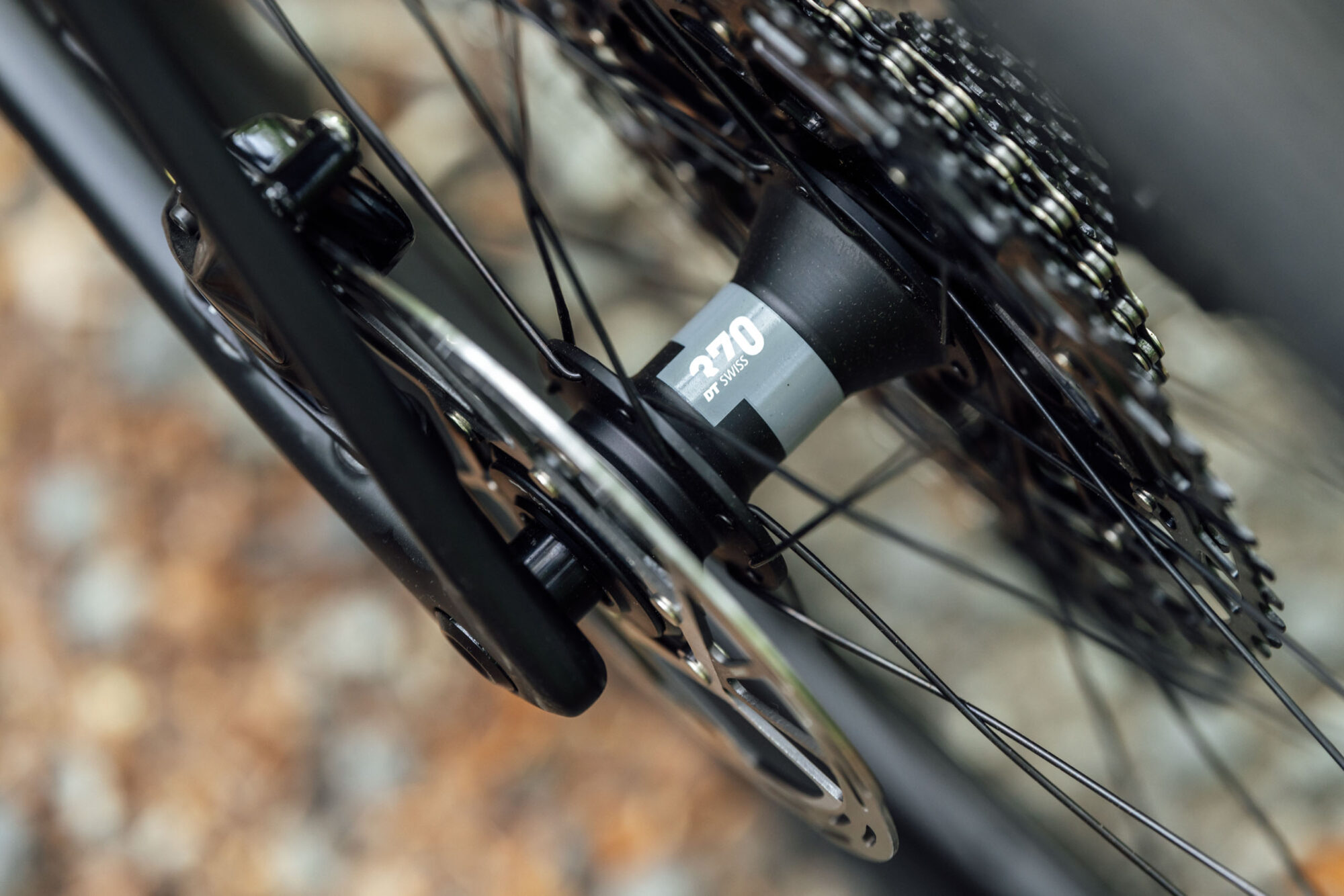
The Adventure Gear Hover alloy handlebars feature a 12-degree flare, which, although not overly aggressive, took a while to get used to. I grew to appreciate them for the added stability and control on the rough stuff as well as the extra room they allowed for a handlebar bag. Note that the shape of the handlebars is a bit fiddly for your usual mounts—I needed to add wraps of tape to get my mounts to sit securely.
An S-Works carbon seatpost adds an extra degree of compliance for comfort, and the Body Geometry Power Expert saddle that everyone seems to love completes the package. I was happy to see an external seatpost clamp on the bike–it’s easy to use and adjust on the fly. I had a little chuckle when my partner kept having to turn his bike upside down as his Giant Revolt’s integrated seatpost clamp kept falling into the frame.
Similar to the other Diverge models, the STR includes the SWAT box integrated into the downtube for storing tools and other essentials in the included waterproof bag. Note, however, that the bottle cage mounts integrated into the door can drive you a bit mad. The nuts, which slot into a molding on the underside of the door, are not held captive, which makes fitting a bottle cage exceptionally fiddly (especially when the bolts keep dropping into the box). When you aren’t using a bottle cage, you need to tape over the holes if you want water and dirt to stay out.
- Model/Size Tested: Specialized Diverge STR Expert
- Actual Weight (54): ~10 kg (22 pounds)
- Place of Manufacture: Taiwan
- Price: $5,500
- Manufacturer’s Details: Specialized.com
Pros
- Front and rear suspension make for confident riding over rough terrain and comfort for long days in the saddle
- No bobbing when out of the saddle or pushing hard
- High-end components such as the SRAM AXS Eagle drivetrain with its smooth, precise shifting
- Generous tire clearance, allowing for wider tires
- Plenty of mounts and internal storage for tools and supplies
- Sleek design
Cons
- Fiddly process to precisely dial in the desired compliance of the Future Shock suspension system at start
- The rear suspension requires an adjustment in seatpost height and saddle position compared to your normal gravel setup
- Because the Future Shock system isolates the rider, not the frame, the rear suspension won’t drastically improve control on technical descents when standing
- Heavier than your average carbon gravel bike
- This is a very expensive bike, with some builds costing as much as a used car
- Don’t forget your spare batteries
- As with all things Specialized, many proprietary parts apart from the drivetrain
Wrap Up
The Diverge STR truly shines not only in its gravel performance but also in its versatility. The bike is equally at home on paved roads, gravel paths, and even some light singletrack adventures. This made it a fantastic choice for exploring Cyprus’s diverse landscapes, where I encountered a huge variety of terrain on a single bikepacking adventure. While the STR Expert is not the lightest bike on the market at roughly 22 pounds for a 54cm, the added comfort and control of the Future Shock suspension system make up for the slightly heavier load.
So, is the Diverge STR worth the money? As a suspension seatpost and stem will cost you around $400, paying a premium of around a thousand dollars for a damped and integrated system that you can adjust on the fly isn’t that much of an ask. However, aftermarket seatposts and stems are easily replaced if something were to go wrong.
With the bike’s focus on comfort and control without sacrificing efficiency, it makes a great option for those into long-distance gravel races, bikepacking races or multi-day bikepacking routes who have the cash to splash out on the latest and greatest. If you want to upgrade from a traditional gravel bike but don’t want to go the mountain bike route, the Diverge STR will help you push your limits of capability and perhaps tackle a bit rougher terrain.
Further Reading
Make sure to dig into these related articles for more info...
Please keep the conversation civil, constructive, and inclusive, or your comment will be removed.











